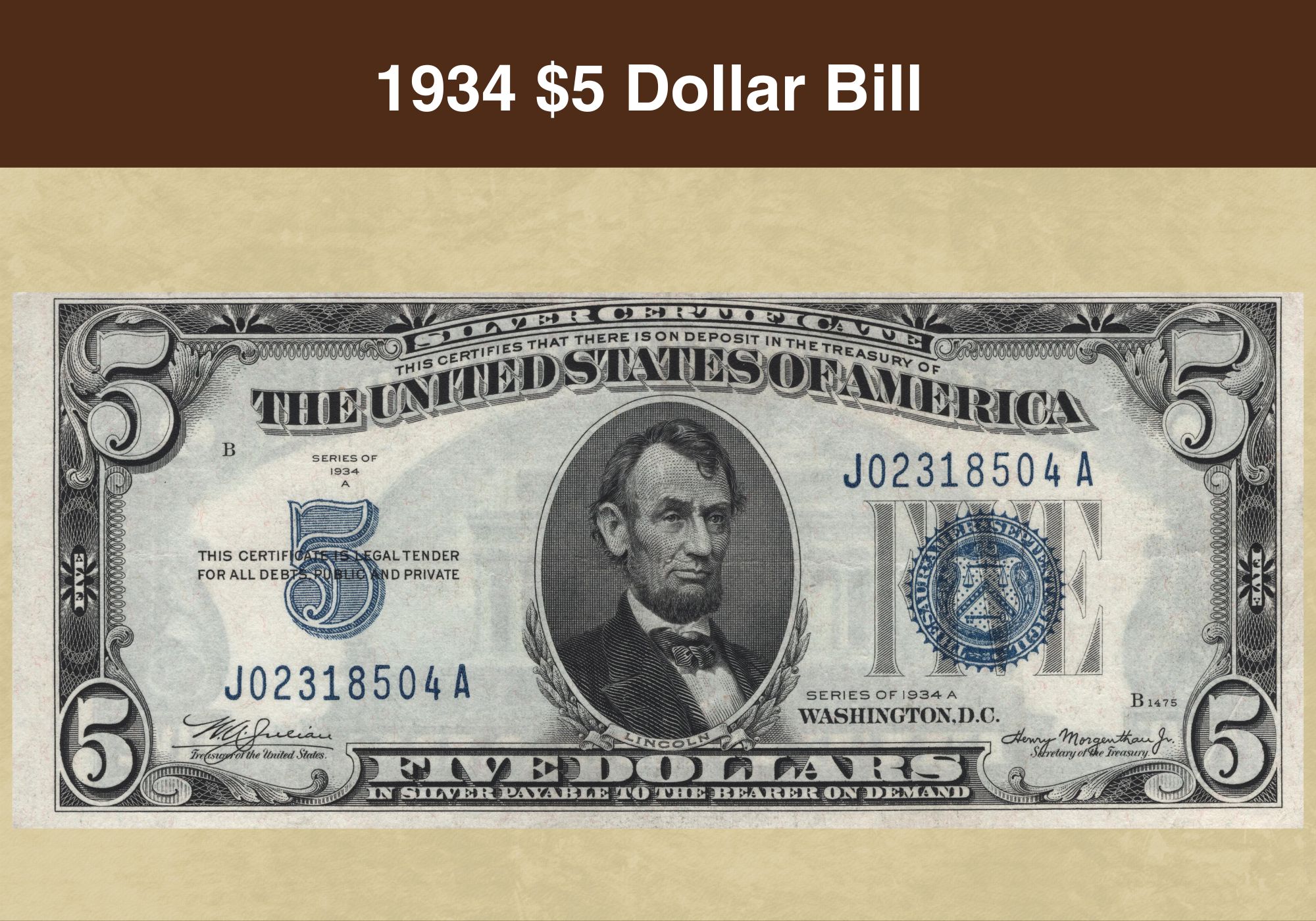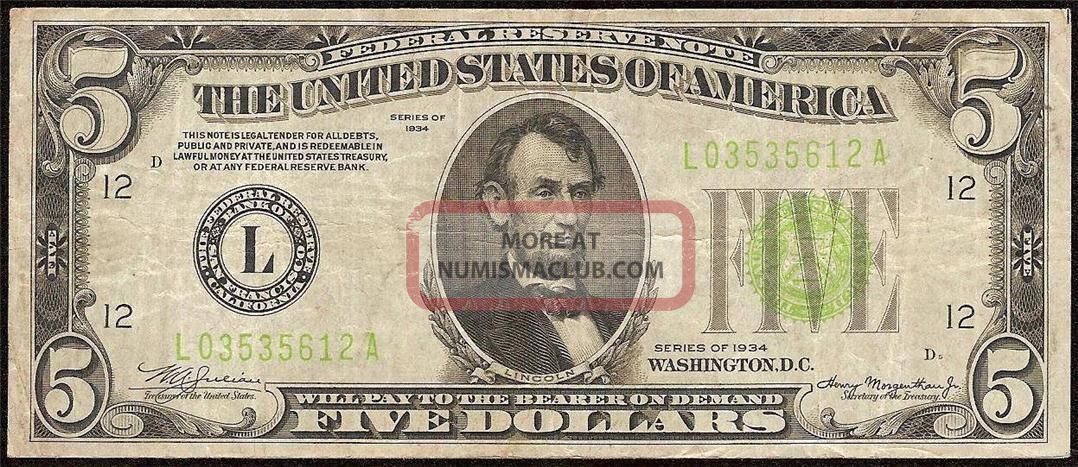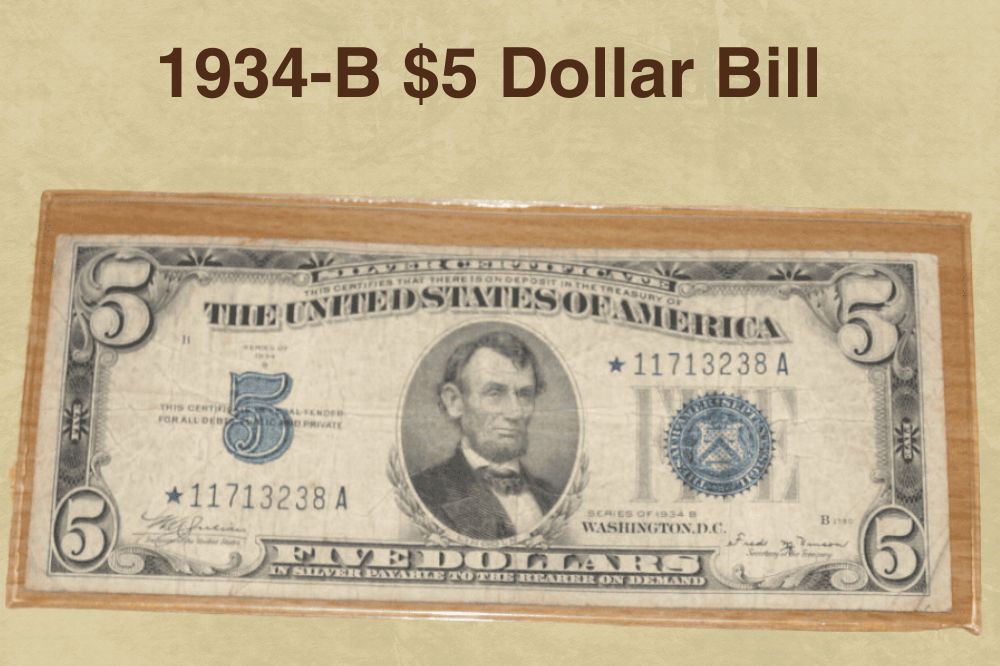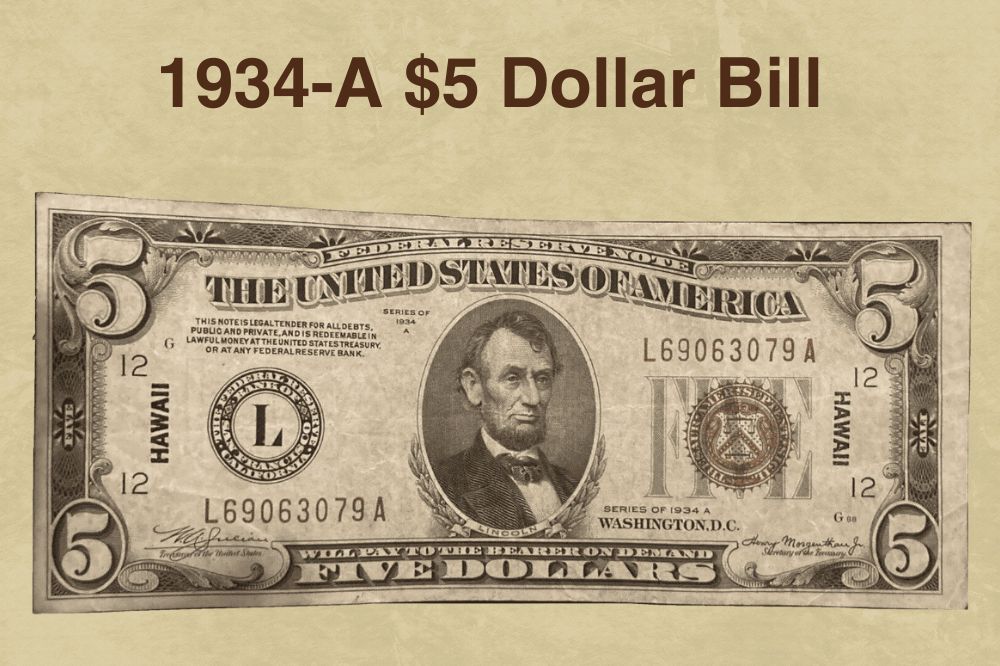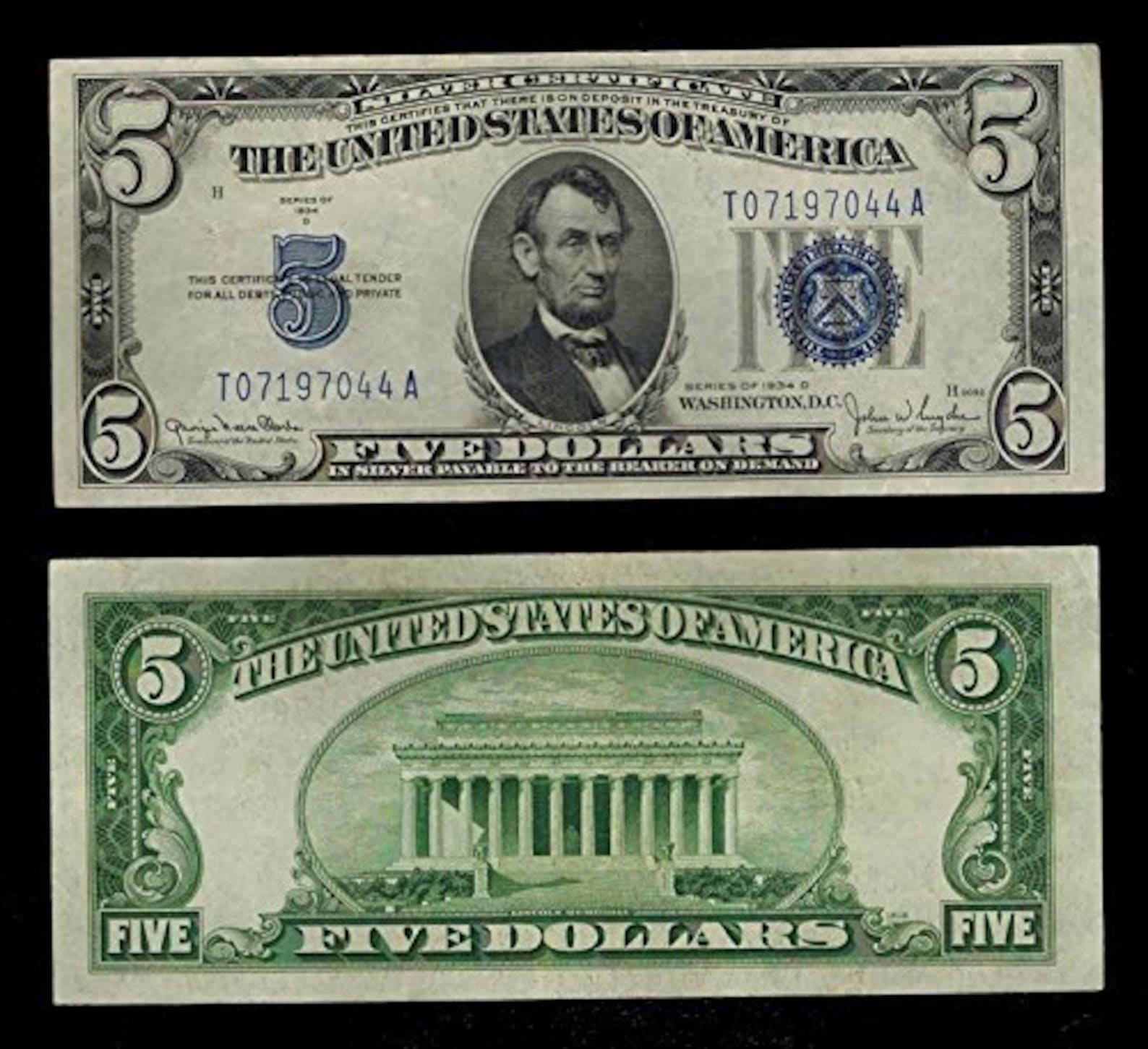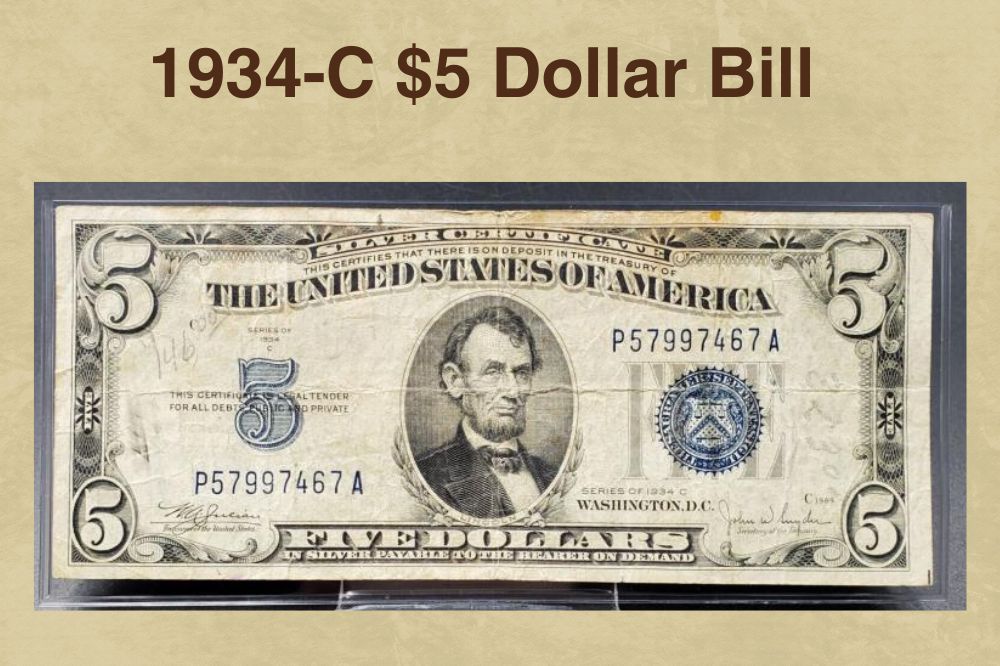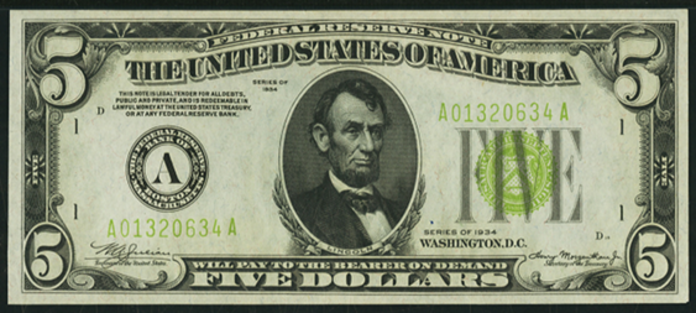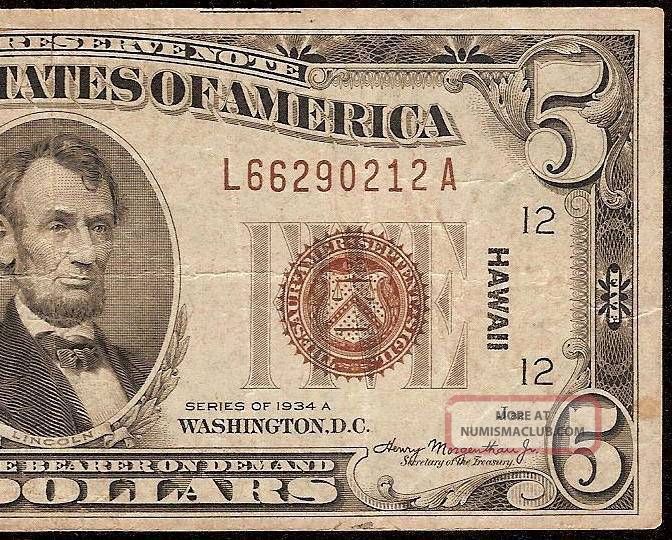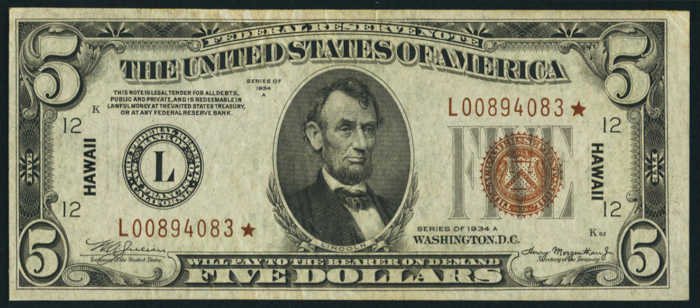Series Of 1934 A 5 Dollar Bill

A seemingly ordinary piece of currency, the 1934 series $5 bill, continues to intrigue collectors and historians alike. Its journey through the Great Depression and beyond offers a glimpse into the economic realities and artistic choices of a pivotal era in American history. While face value might suggest otherwise, these notes carry a significant story.
At its core, this article explores the 1934 series $5 bill: its design, production, variations, and current collectable value. It details the historical context surrounding its issuance and highlights its unique characteristics. The aim is to provide a comprehensive overview for both seasoned numismatists and curious individuals.
The 1934 Series: An Overview
The 1934 series $5 bill was printed by the Bureau of Engraving and Printing (BEP) under the authority of the United States Department of the Treasury. The series encompasses various sub-series denoted by letters such as "A," "B," "C," "D," "E," and "F" printed after the 1934 date. These letters indicate modifications to the bill's design or the individuals whose signatures appear on it.
Key figures associated with the bill include the Treasurer of the United States and the Secretary of the Treasury, whose signatures are prominently featured. During the 1934 series, these included officials like Henry Morgenthau Jr., who served as Secretary of the Treasury under President Franklin D. Roosevelt.
The bill's design is consistent with the standard $5 bill format of the time. It features a portrait of Abraham Lincoln on the front and the Lincoln Memorial on the reverse. This design choice reflected the nation's reverence for Lincoln's leadership and his enduring legacy.
Key Design Elements & Distinctions
Several nuances differentiate the 1934 series $5 bills. Variations in the signatures, seal colors, and district numbers contribute to their uniqueness. Examining these details is crucial for collectors seeking to identify specific sub-series or rare examples.
Federal Reserve District Numbers are printed on the face of the bill, indicating which of the twelve Federal Reserve Banks issued the currency. Each district corresponds to a specific region of the United States, adding a geographical dimension to the bill's history.
Seal color also varies. The Great Seal of the United States, located on the right side of the bill's face, is typically green on standard Federal Reserve Notes. However, slight variations in color saturation and printing quality can occur, potentially affecting collectable value.
Historical Context: The Great Depression
The 1934 series emerged during the depths of the Great Depression, a period of immense economic hardship for the United States. The government's monetary policies during this time, including currency production, reflected the efforts to stabilize the economy and restore public confidence.
The issuance of these bills coincided with numerous New Deal initiatives aimed at alleviating poverty and unemployment. Currency played a vital role in facilitating commerce and providing economic stimulus.
"The Great Depression presented unprecedented challenges to the nation's financial system, requiring innovative solutions and decisive leadership,"– This quote, echoing sentiments from historians, underscores the significance of understanding the economic backdrop against which these bills were produced.
Collectibility and Value
The value of a 1934 series $5 bill is determined by several factors. These include its condition, rarity, and any unique features it may possess. Uncirculated or near-mint examples command higher prices than those showing signs of wear and tear.
Error notes, featuring misprints or other anomalies, are particularly prized by collectors. These errors can range from minor ink smudges to significant design flaws, drastically increasing the bill's value.
Websites and publications specializing in numismatics, such as the Professional Coin Grading Service (PCGS) and Numismatic Guaranty Corporation (NGC), offer resources for assessing the value of these bills. Auction houses also serve as important marketplaces for buying and selling rare currency.
A Lasting Legacy
The 1934 series $5 bill represents more than just a denomination of currency. It's a tangible link to a transformative period in American history. It symbolizes the nation's resilience and its commitment to overcoming adversity.
Whether viewed as a financial instrument, a historical artifact, or a collector's item, this humble $5 bill offers a fascinating glimpse into the past. Its story continues to captivate those interested in numismatics and American history.
The enduring appeal of the 1934 series $5 bill lies in its ability to connect us to a bygone era. It reminds us of the challenges and triumphs that have shaped the nation we know today.
